Our challenge this month is how do we to get others to change. In my previous post we focused on the first critical step in any change effort – establishing a compelling “why.” If you’ve successfully completed this first task, you probably have some uncomfortable and anxious folks on your hands. It’s at this point that you want to quickly swoop in with a step-by-step action plan for them to take hold of so they can release their anxiety on something productive. If you don’t, who knows what can happen.
Fred, The Layoff King
When we first met, Fred was approaching his 80th birthday. Despite his aging appearance, Fred still had that CEO aura about him. His career had been fascinating. Fred started off as a paratrooper in the military and eventually graduated from an ivy league school with an MBA. Fred went on to dedicate his whole career to turning around struggling companies. He would swoop into a dying company, apply some sophisticated “CPR” tactics and would eventually pull the company away from the brink. His most impressive professional lifetime accomplishment was that he was 24 for 24 in turning around struggling companies. In other words, every company he took over went on to live a long life after his resuscitation. So you might expect me to tell you one of his amazing corporate change stories. No. Instead, I’m going to tell you about what Fred was most proud of in his professional career. As Fred put it, he had to lay off “thousands” of employees as a turnaround CEO, and not one time did Fred ever get sued. Not once. Fred’s secret was simple. When Fred had to lay-off an employee, he would sit the employee down, give him or her the bad news (Fred was good. He had already had multiple performance conversations so this final conversation did not come as a shock to the employee) and then say to him or her, “Now, I want you to go back to your desk and don’t tell anyone what has happened. Not your family, friends or co-workers. Just think about what you want to do next and in 2 hours come back to my office and we are going to work on a career plan for you.” Fred was smart. He understood that when he ripped out someone’s job from under him or her, he had in essence created a heightened level of instability and anxiety. As Fred noticed throughout his career, “without a plan, employees would go home tell their family about the lay-off, get worked up and by Monday there was a lawsuit waiting for the employer.” But with a plan, he gave the former employee something productive to execute. Not one lawsuit against Fred his entire career – not many turnaround CEO’s can say that.
The makings of a good change plan
A good change plan doesn’t need to be complex, but there are some important attributes that should be present. Whether we are trying to get a relative to move out of the house or get an entire organization to change its focus, consider some of these essential components to any good plan:
- Step by step – a good plan should look like a board game (remember those?). It should be a step-by-step process. Sounds simple enough, but imagine if you didn’t do that? I see consultants and MBA students alike make this horrific mistake. They throw up five important actions that the client needs to start doing with no priority or order essentially saying, “You need to do all of these things now. Good luck with that.” If we were to use a not-so-different analogy, consider for a moment that you were trying to get someone who is 200lbs. overweight to lose weight. The last thing you would want to say would be: “You need to change what you eat, reduce the amount of what you eat, work out 5 times a week for at least an hour a day, stop watching television, go to bed earlier, don’t eat after 8:00 pm, etc…” They would just look at you blankly, get up and walk over to the fridge for a snack. Make sure you simplify the plan to a “one step at a time” approach. Make it easy to ensure steady progress.
- Measurable actions THEN measurable results – Second, all steps in your plan should have something measurable to gauge progress. However, depending on the degree of difficulty, you might need to focus first on measuring behaviors and later measure results. After all, results often lag behaviors and sometimes by a lot. For example, going back to our overweight “client,” we would first focus on measuring how long he or she walked on the treadmill each day. What we would not do is first focus on weight loss. We would concentrate our efforts on behavior change knowing that the weight loss result will come later. If you’ve ever seen the T.V. show “The Biggest Loser,” you know that some weeks the weight doesn’t come off despite the hard work the participants put forth. That doesn’t mean they (or we) shouldn’t keep doing the hard work. Behaviors first, results later.
- Target short-term wins – John Kotter, the change guru from Harvard, is a big fan of short-term wins. So am I. Set up your plan so that the first goal is short and easy to attain. Get the momentum high early in the process so you can keep it going. Showing progress quickly and often is critical to ensuring your “client” stays on the change path.
There you have it, the makings of an effective change plan. As I said before it isn’t a difficult concept to grasp. Just be thoughtful to include the right ingredients to ensure an “easy to adopt” and “easy to maintain” plan of action. After all, the refrigerator is always calling.








